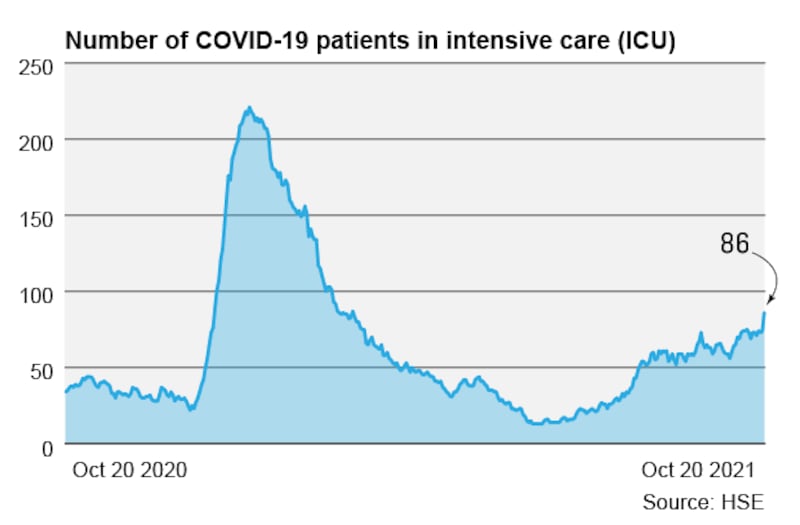The early arrival of respiratory complaints among children and higher Covid-19 numbers are the main factors making hospitals busy ahead of the usual winter rush.
Children’s hospitals in particular are under heavy pressure from high volumes of attendances, which has resulted in emergency department overcrowding, full wards and intensive care units (ICUs) and the cancellation of some elective work.
One day last week Children's Hospital Ireland reported its busiest day ever, with 620 children seen across the three Dublin paediatric hospitals.
Hospital Report
A surge in respiratory syncytial virus (RSV) and outbreaks of Norovirus (winter vomiting bug) is driving the rise in presentations. Covid-19 is not a big factor in children’s hospitals, but all patients attending have to be treated as possibly having the disease, adding to the workload of staff.
Total of 2,029 cases of Covid-19 confirmed as HSE warns procedures will be cancelled if numbers rise
Misconceptions about meaning of antigen results widespread, report finds
Vaccine boosters not to be given to under-40s ‘any time soon’ says Holohan
Ireland facing mental health ‘tsunami’ among children, committee told
Among adult hospitals, there are more Covid-19 cases than there were at the same time last year, with further increases in hospitalisations and ICU admissions forecast.

On Wednesday night there were 437 Covid-19 cases across the entire hospital system, compared to 311 on the same day last year. The HSE said it had 15 available adult ICU beds on Wednesday evening, and no paediatric ICU beds. Nineteen hospitals were listed as having no ICU beds free. A year ago on the same day, there were 38 adult ICU beds and 13 paediatric beds free, and 11 hospitals had no free ICU capacity. The deterioration this autumn has occurred despite an increase in ICU capacity over the year from 279 to 292.
Surge plans
The management of hospital beds is a complex area, and the numbers involved can be “flexed”. Just as in a busy restaurant, there are people coming, people going and people being accommodated in non-traditional areas.
All hospitals have surge plans – these may result in the cancellation of non-urgent work – and critical care can be provided outside ICUs.
In terms of patients waiting for admission to hospital, the system is currently less busy than it was pre-pandemic. The HSE’s TrolleyGar count for Thursday was down by a quarter on the same day two years ago. However, due to the factors mentioned above it was 90 per cent up on last year.
Trends may be uneven across the country; University Hospital Limerick, for example, says attendances at its emergency department are up 26 per cent on 2019.
The figures show the extreme pressure on paediatrics, with trolleys at the children’s hospital up 366 per cent on 2019 and 250 per cent on last year. Although the number of trolleys here is small, the situation was actually twice as bad earlier this week.
There is little sign of flu yet, though the first cases have reached some hospitals. With no flu having circulated last year thanks to pandemic precautions, many in the population may be extra vulnerable this winter. The fear among health staff, indeed the expectation, is that flu plus Covid is going to make for a very difficult winter in our hospitals.
The TrolleyGar listings for individual hospitals are generally a blur of red lines, indicating overstretched facilities. The exception is the RCSI hospital group, coloured in green – Beaumont, Connolly and Our Lady of Lourdes Hospital in Drogheda all had no patients on trolleys, while Cavan hospital had four.
Admission
This is confirmed by the separate TrolleyWatch count by the Irish Nurses and Midwives Organisation, while in contrast a small hospital like Letterkenny has 46 patients waiting for admission.
The RCSI hospital group also has the shortest waiting lists in the State with, for example, 90 per cent of endoscopy scopes performed within 13 weeks. This has been achieved through strict managerial accountability and the effective use of smaller hospitals in the group for elective procedures.
Its performance begs the questions why other hospital groups are unable to emulate this success and if funding issues are hampering improvements why they have not been sorted out yet.














